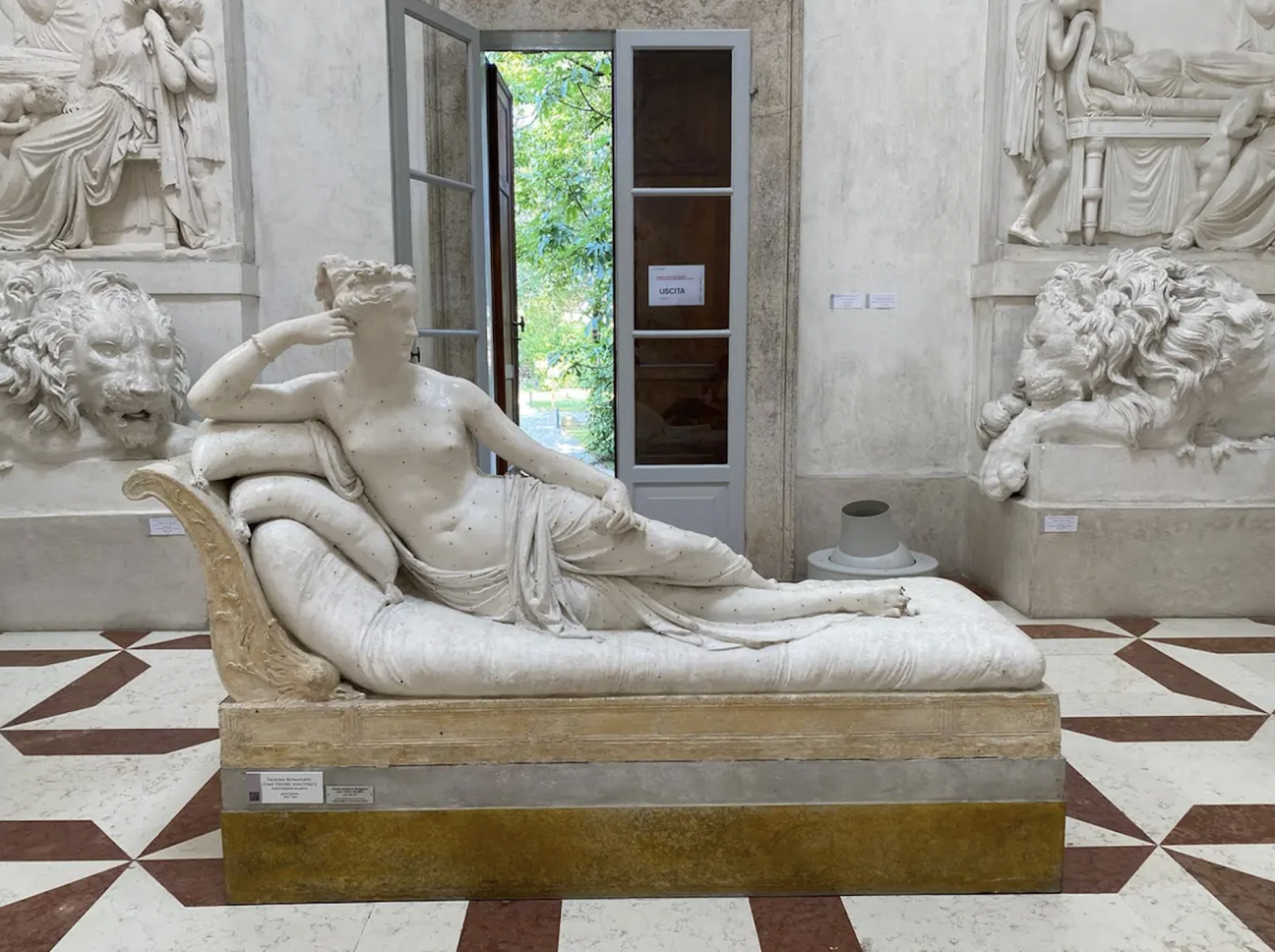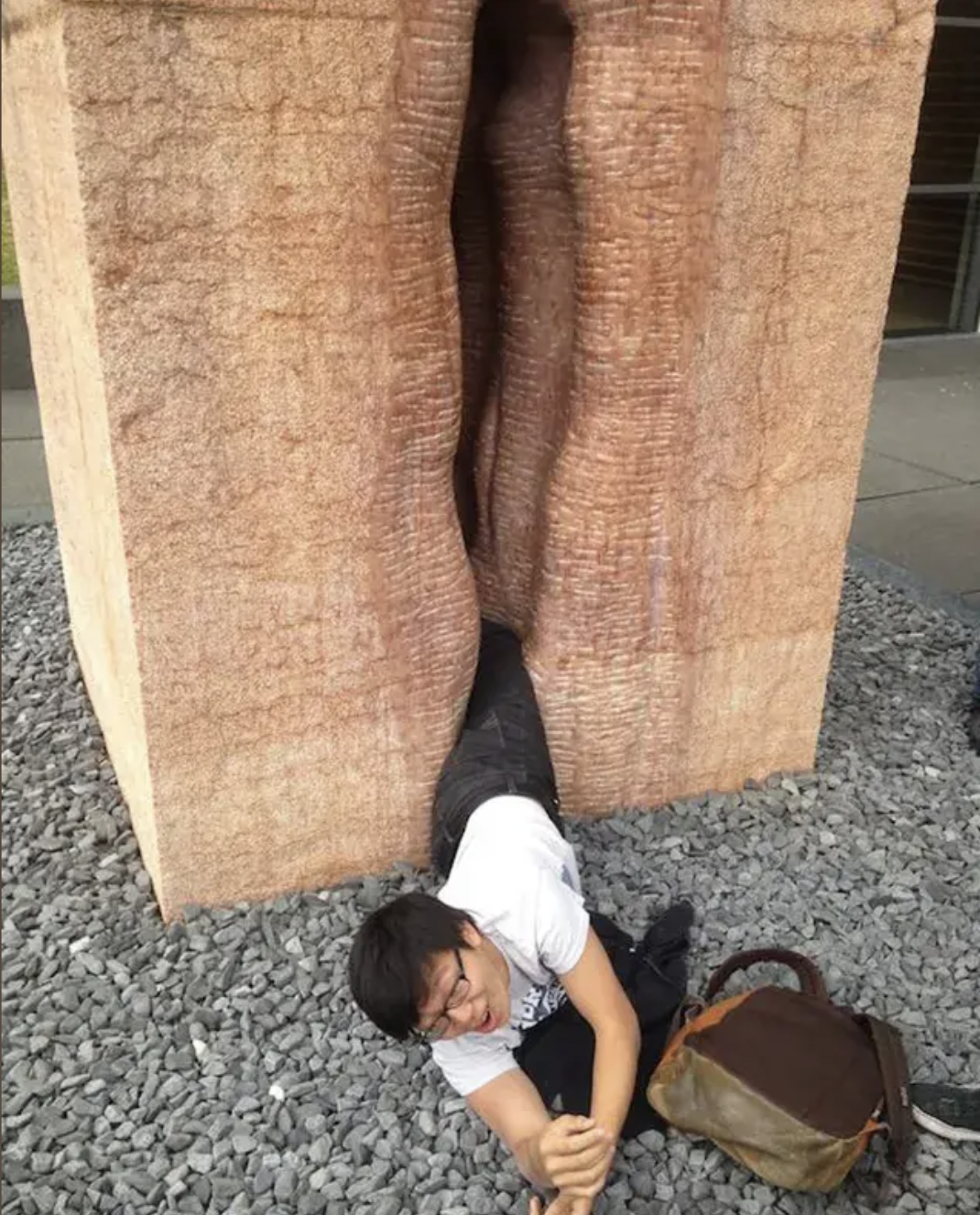As travel season sweeps in, museums and cultural heritage sites brace themselves for the annual influx of visitors. Tourists, armed with their selfie sticks and trademark enthusiasm, inadvertently become the sworn enemies of delicate artworks and historical monuments. Irreparable accidents serve as an annual reminder of why velvet ropes and high fence barriers exist. CULTURED rounded up some examples of the most egregious incidents to keep in mind, should you be tempted to dodge any long-suffering guards.
Dubious Disaster Zones
How far will one go for love? Is carving out your lover’s name on a nearly 2,000-year-old monument far enough? Last month, Bristol-based Ivan Dimitrov commemorated his visit to the Colosseum in Rome by engraving “Ivan + Hayley 23/6/23” on a restored brick wall from the mid-19th century. A fellow tourist recorded Dimitrov etching into the ancient monument in Italy. According to the New York Times, Colosseum officials only became aware of the vandalism three days later, once the viral video was posted on YouTube. “I admit with deepest embarrassment that it was only after what regrettably happened that I learned of the monument’s antiquity,” wrote Dimitrov in a letter of apology to Roman officials, offering what is either a serious indictment of England’s schooling system or an unbelievable cover-up. Regardless, he is potentially facing two to five years in prison or a fine of up to 15,000 euros.
Speaking of left-field excuses, a couple unintentionally defaced a $500,000 abstract graffiti painting by American street artist JonOne in 2021 while visiting a street art exhibition at a mall in Seoul. The pair mistakenly interpreted the assortment of brushes and paint tubes scattered near the canvas as an invitation to contribute to the artwork. The materials were meant to metaphorically represent JonOne’s creative process, not that of the viewers. Ultimately, the gallery did not press charges as the couple sincerely believed it was an interactive art experience and had no intention of “vandalizing” the piece.
Back in 2017, a family placed their baby inside an 800-year-old sandstone coffin for a picture while visiting Prittlewell Priory, a museum and park in England. During this process, they knocked the coffin from its stand, and repairs were estimated at £100, according to Insider. Reports stated that the family did not stop to mention the damage when fleeing the premises.

The “Priceless” Selfie
In 2017, a woman lost her balance at Los Angeles's 14th Factory while trying to photograph herself, damaging a display holding $200,000 worth of art. While crouching down to take her perfect picture, the woman bumped into a 14,000-square-meter installation, Hypercaine by Simon Birch, setting off a tumbling pedestal domino effect that sent carefully crafted crowns tumbling to the floor.
Alas, the saga of selfie offenses against museum artworks continues. In 2022, a visitor at the Museo Reina Sofia in Madrid accidentally damaged Alberto Sánchez’s set piece for La romería de los cornudos (The Pilgrimage of Cuckolds), 1933, while snapping a picture. In an attempt to catch her balance after tripping, she reached out and tore the piece’s wallpaper straight through.
Another incident involved the severing of two toes from an original 19th century plaster cast of an Antonio Canova sculpture. A 2020 visitor to the Gipsoteca Museo in Northern Italy sat on the piece for a selfie, squashing the appendages, and quickly left after realizing the damage, as chronicled in The Art Newspaper.

Clumsy Tourists
If you've made it this far, you know that good balance is not as common as one might think, especially when surrounded by loads of rare and expensive artwork. This past April, a viewer at the Minneapolis Institute of Art tripped and knocked over an ancient Chinese zun, or wine vessel. The piece was shaped like an owl and dated back to the 12th or 13th century B.C.E. It was immediately confiscated and placed into safe hands for assessment and repair.
In 2015, a 12-year old boy stumbled and delivered an unintended blow to a prized masterpiece by Paolo Porpora—valued at $1.5 million. Luckily for the boy and his family, the painting was insured. Unfortunately for the piece, the fist-sized hole punched through the canvas required delicate repair.
In another unfortunate event, this time in 2017, an exhibit-goer damaged a glowing pumpkin patch, breaking one of the sculptures at Washington’s Hirshhorn Museum. The crushed ceramic was featured in one of Japanese artist Yayoi Kusama’s “Infinity Rooms,” where visitors were allowed in alone to serenely take in their surroundings. According to Artnet, a singular spotted pumpkin is worth approximately $800,000, but due to the museum’s closed door policy, what exactly happened in the guest’s allotted 30-second time slot will never fully be known.

Trapped Inside
In Germany, a U.S. exchange student trapped himself inside a 32-ton, red, Veronese marble vagina sculpture while attempting to pose for a funny, memorable picture. It required a team of 22 firefighters, five fire trucks, and several paramedics to free him. Peruvian artist Fernando de la Jara’s sculpture, Chacán-Pi (Making Love), was installed in front of the university's institute for microbiology and virology, symbolizing "the gateway to the world," according to the Guardian.
Sometimes even locals become overly adventurous. In April, a 26-year-old Canadian man climbed the Talus Dome, one of the most famous public art sculptures in the country, only to fall in and trap himself inside. Rescuers were forced to cut into the structure and remove one of its 1,000 stainless steel spheres. Subsequently, the man was arrested and charged a $5,000 fine. The structure reportedly cost $600,000 to build and is a regular target for public interference—having previously been splattered with green paint.










 in your life?
in your life?

